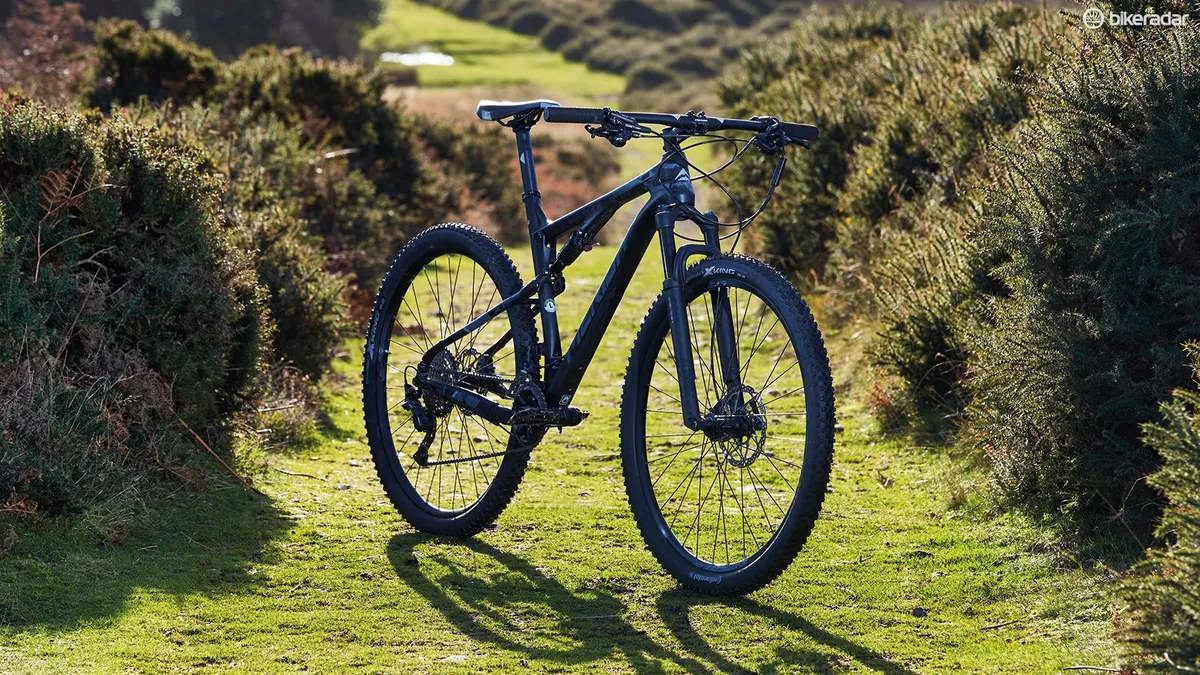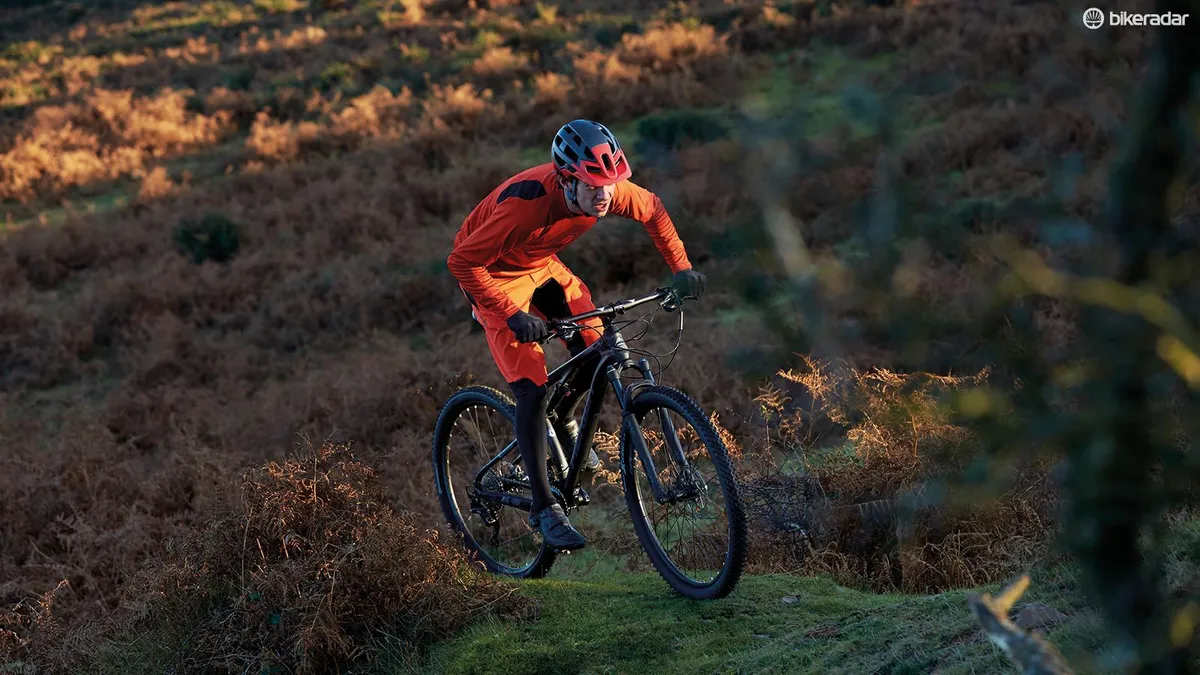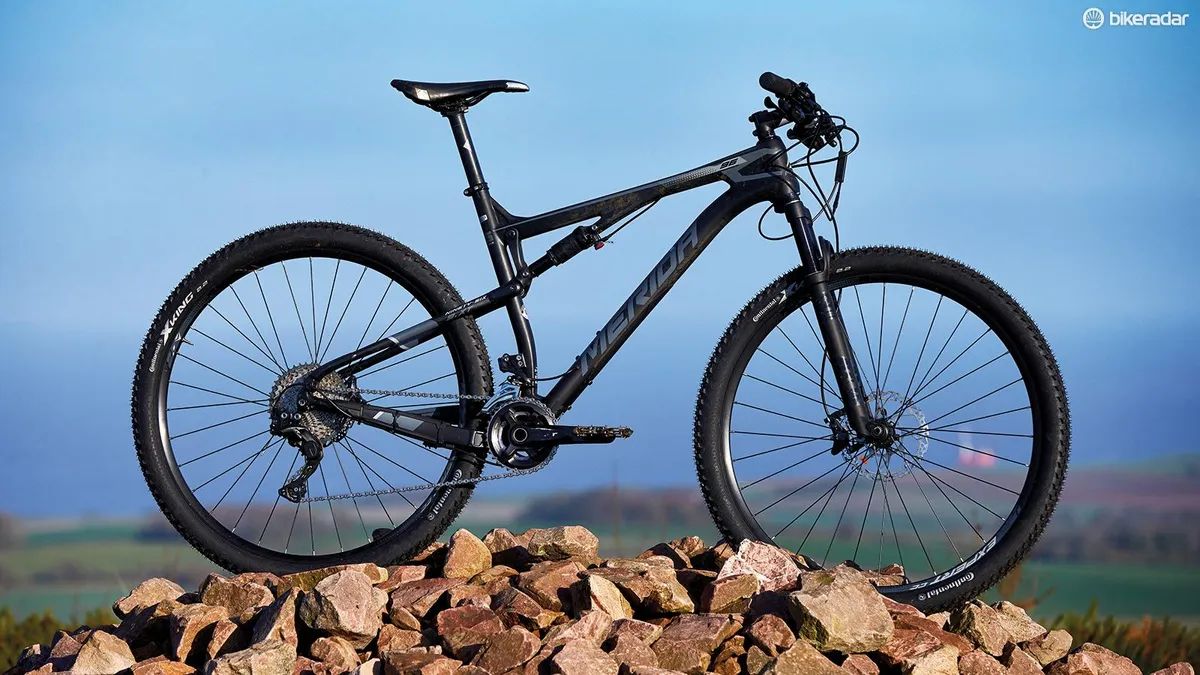We’ve ridden the Ninety-Six before and it was a pretty sketchy, short and twitchy experience. The latest version is still XC in character but it’s a much stiffer and more fundamentally sorted bike, so climbing speed no longer means rough-terrain terror.
The voluptuous double lumps on the head tube extend back into a broad then deep top tube that’s buttressed at both ends. The swollen, curved down tube broadens to a rounded rectangle at the conventional screw-in bottom bracket.

The asymmetric alloy rear end is neatly detailed too, with multiple tubing sections on all the stays and a single-sided rear pivot just above and ahead of the 148mm Boost rear dropouts. The axle is tapered and matched with a cut-away ratchet handle to save a few grams, while the neat inside-edge brake mounts keep the outside-edge hose routing of the XT calipers safe from crash damage.
Further detailing includes the single-piece carbon rocker link, a custom rubber anti-chainslap sleeve and internal cable routing that pops out sideways far enough forward to stop it getting in the way of knees. There’s only one bottle cage mount though, even on the large frame.
The 32 Performance fork uses Fox’s latest Step Cast chassis and a 110mm Boost front hub for extra wheel stiffness. Continental X-King tyres are fast without being treacherous in the wet. While not light, the adjustable-bearing Shimano Deore hubs are potentially far more durable than cartridge bearing sets with occasional, simple servicing.

Keep an eye on the press-fit bottom bracket if you’re mashing out the miles, though. Otherwise, the steel chainrings and 22 wide-range gears should spread wear and mean you’ll always have the right ratio. The side-swing front mech makes switching between chainrings super-easy, though lockout and front shifter levers make the left-hand side of the bar crowded.
It also comes with the stem flipped downwards and foam grips, underlining its unapologetically race-focused character.
Merida Ninety-Six 9.XT ride impression
Add a 70-degree head angle and — even with the stem upturned and a 720mm bar — the Merida has nineties-style handling. But despite its snappy rather than stable steering, the Merida reveals good depth of control.
The Step Cast fork and Continental tyres give a small but significant grip edge as speeds and trail trauma increase, and the mainframe feels solidly planted. Also, even though it has a relatively long back end, the Boost spacing gives rear wheel placement a purposeful precision and stops the steering instability dominating the overall handling character.

The impressively solid back end also gives it terrific acceleration punch — I found myself deliberately letting other riders close gaps towards the top of smoother climbs with my thumb hovering over the dual lockout like a trigger, waiting to crush them with a flat-out final furlong.
With a proper pivoted structure and balanced rear suspension kinematics, fully-open control is good too. Plenty of low-speed compression keeps the Merida relatively efficient and terse in character, but then, this is a race bike primarily designed for pedalling. It’s still smooth enough to make sure bigger blocks and general punishment don’t kick the wheel off the ground or come through the carbon seatpost and quality Prologo saddle into your shorts. There’s no chain tug to upset pedalling rhythm or traction either.
This all puts it right up top in our pure race-bike ratings. If you want a more trail-style bike and 120mm of travel, check out Merida’s One-Twenty range or, if you fancy slightly faster acceleration and handling, see the 650b Ninety-Six models.

